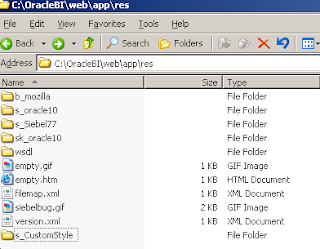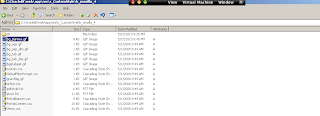1977 Larry Ellison, Bob Miner, Ed Oates launch Software Development Laboratories, the predecessor of Oracle.
1978 Oracle Version 1, written in assembly language, runs on PDP-11 under RSX, in 128K of memory. Implementation separates Oracle code user code. Oracle Version 1 is never officially released.
1979 Oracle Version 2, the first commercial SQL relational database management system (RDBMS), is released. The company changes its name to Relational Software Inc. (RSI).
1981 RSI begins developing tools for Oracle, including the Interactive Application Facility, a predecessor of Oracle Forms.
1982 RSI gets a new name—Oracle Systems— hosts its first user conference, in San Francisco.
1983 Oracle Version 3, built on C, is the first RDBMS to run on mainframes, minicomputers, PCs.
1984 Oracle Version 4, which supports read consistency, is released. Oracle ports Oracle Database to the PC platform. The MS-DOS version (4.1.4) of Oracle runs in only 512K of memory.
1985 Oracle releases Oracle Version 5, one of the first RDBMSs to operate in client/server environments.
1986 Oracle goes public on the NASDAQ exchange.
1987 Already the world's largest database company, Oracle launches an effort to build enterprise applications that take advantage of Oracle Database.
1988 Oracle Version 6 debuts with major advances: Row-level locking allows multiple users to work in the same table, by processing only the specific data used in a transaction. Hot backup reduces system maintenance overhead, by allowing employees to continue working in the system while administrators duplicate archive data. PL/SQL enables users to process data while it remains in the database.
1989 Oracle moves into its world headquarters in Redwood Shores, California.
1990 The company launches Oracle Applications Release 8, which includes accounting programs designed for the emerging client/server computing environment.
1992 Oracle7 is released, with performance enhancements, administrative utilities, application development tools, security features, stored procedures, triggers, support for declarative referential integrity, the PL/SQL procedural language embedded in the database.
1993 Oracle is the first software company to rewrite business applications for client/server environments, automating business processes from a centralized data center.
1994 Oracle earns the industry's first independent security evaluations, adding third-party assurance of the strength of Oracle's products.
1995 Oracle becomes the first major software company to announce a comprehensive internet strategy.
1996 Oracle delivers Universal Server, enabling customers to use Oracle Database to manage any type of data—text, video, maps, sound, or images.
1997 Oracle releases Oracle8.
1998 With Oracle8 Database Oracle Applications 10.7, Oracle is the first enterprise computing company to embrace Java.
1999 Internet capabilities saturate every Oracle offering, from support for open standards technologies such as XML Linux to the latest versions of Oracle product lines, such as Oracle Applications 11i Oracle8i Database.
2000 Oracle ships Oracle E-Business Suite Release 11i, the industry's first integrated suite of enterprise applications.
2001 Oracle9i Database adds Oracle Real Application Clusters, giving customers the option to run their IT on connected, low-cost servers.
2002 Oracle launches the "Unbreakable" campaign to mark the unprecedented 15 independent security evaluations earned by Oracle Database.
2003 Oracle debuts Oracle Database 10g, the first grid computing product available for the enterprise. Oracle grid computing serves computing power across the enterprise as a utility, automatically shifting processing loads based on demand.
2004 Oracle provides a single customer view from multiple datasources with Oracle Customer Data Hub.
2005 Oracle completes the acquisition of PeopleSoft announces its intention to acquire Siebel Systems.
2006 Oracle deepens a 30-year commitment to open standards computing with Oracle Unbreakable Linux—giving customers the same level of support for Linux that they receive for other Oracle products. The move in effect certifies the operating system for enterprise computing.
2007 Oracle launches five application product lines acquires Hyperion Solutions, a provider of performance management software.





















